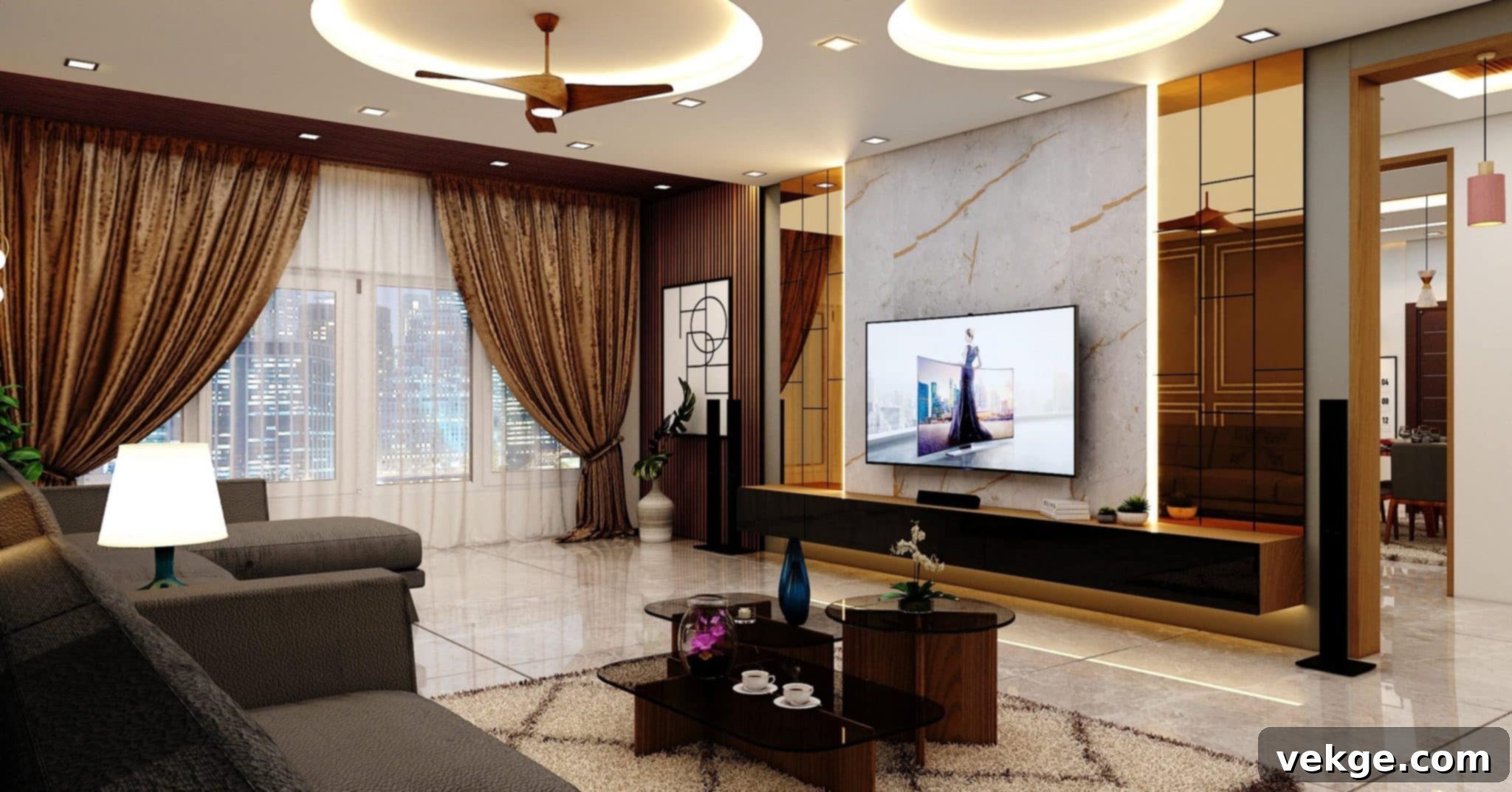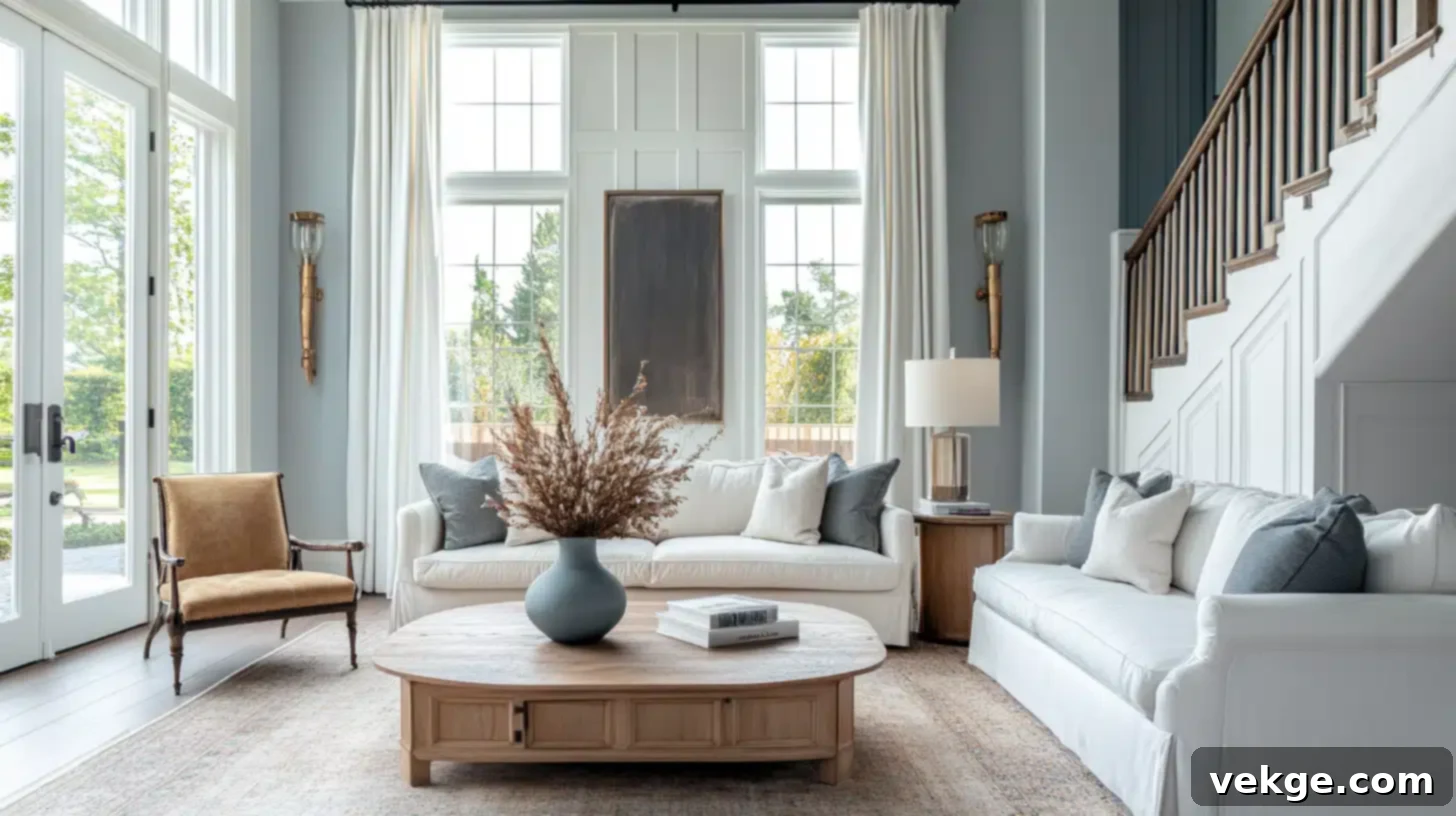Mastering Your Home Remodel: The Indispensable Partnership of Interior Designers and Renovation Contractors
Embarking on a home remodel is an exciting journey, a unique opportunity to transform your living space into the home of your dreams. However, the path to a truly successful outcome is often paved with complex decisions, intricate details, and the absolute necessity for specialized expertise. This is precisely where the seamless collaboration between an experienced interior designer and a skilled renovation contractor becomes not just beneficial, but absolutely crucial. Each professional brings a unique and vital set of skills and knowledge to the table, ensuring that both the aesthetic vision for your space and the practical, structural execution are flawlessly integrated. This powerful partnership guarantees that your remodeling project not only achieves stunning visual appeal but is also structurally sound, highly functional, and completed efficiently and within budget. Understanding how these two key players work hand-in-hand is the fundamental first step toward a smooth, stress-free, and ultimately rewarding home transformation.
The Foundation of Success: Initial Consultation and Planning for Your Renovation

Every successful home renovation project begins with a thorough and thoughtful initial consultation. This critical meeting typically involves the homeowner, the interior designer, and the renovation contractor, setting the stage for mutual understanding, transparent communication, and collective goal-setting. It’s during this pivotal phase that the project’s core objectives are meticulously defined, ensuring everyone is aligned on the desired outcome, practical limitations, budget considerations, and the overall scope of work. This collaborative kickoff establishes a robust framework, mitigating potential misunderstandings and fostering a shared vision right from the very start of your remodeling journey. It’s a vital step to lay solid groundwork for what’s to come, preventing future conflicts and ensuring all parties are on the same page.
Defining the Vision with Your Expert Interior Designer
The interior designer steps into this phase as your primary advocate for aesthetics, functionality, and overall spatial experience. Their role is to meticulously understand your personal style preferences, daily functional needs, and the overarching vision you hold for your transformed space. They delve into details often overlooked by the untrained eye, considering how elements like color schemes, furniture layouts, lighting design, material choices, and textural contrasts will coalesce to create a cohesive, inviting, and personalized atmosphere. Through in-depth conversations, visual aids, mood boards, and perhaps even detailed style questionnaires, the designer expertly translates your abstract ideas and inspirations into concrete design concepts. Their expertise ensures that the new space will not only look beautiful but also genuinely enhance your lifestyle, comfort, and daily routines, perfectly reflecting your unique taste and requirements.
Assessing Feasibility and Structural Realities with Your Renovation Contractor
Simultaneously, the renovation contractor brings their indispensable practical and technical expertise to the initial planning stages. Their focus is on evaluating the structural aspects of the project, thoroughly assessing the existing framework of your home to ensure that the desired changes are not only possible but also safe, compliant with local building codes, and structurally sound. This involves a comprehensive examination of critical elements such as load-bearing walls, existing plumbing and electrical systems, HVAC considerations, and any potential structural modifications that may be required. The contractor provides crucial insights into practical considerations, identifying potential challenges early on, offering preliminary estimates for structural work, and suggesting solutions. Their early input is vital for understanding the true scope of work, anticipating potential hurdles, and ensuring the ambitious design vision can be brought to life without compromising the integrity, safety, or long-term durability of your home. This foundational assessment helps to anchor the creative design firmly in structural reality, laying the groundwork for a safe and enduring remodel.
For a deeper understanding of how comprehensive planning underpins a successful large-scale project, consider the meticulous approach exemplified by full home renovations. A great example of this detailed planning, where design aspirations merge with practical construction realities, can be found on the Solid Solutions website, which illustrates how a complete home renovation is approached: https://www.solidsolutionsrenovations.com/complete-home-renovations-calgary/. This resource highlights the critical fusion of design inspiration with tangible construction capabilities, a hallmark of effective collaboration.
Bringing Ideas to Life: Design Development and Refinement for Your Home Transformation
Once the initial consultation has established a clear direction and a shared understanding, the collaboration intensifies during the design development phase. Here, the interior designer and the renovation contractor work in extremely close concert to transform preliminary concepts into a comprehensive, detailed design plan. This iterative process is essential for ensuring that the evolving design not only aligns perfectly with the homeowner’s vision and aesthetic desires but also meticulously respects the structural and practical realities of the space. This synchronized approach is key to preventing costly changes down the line, fostering innovative solutions, and ensuring the final design is both beautiful and buildable.
Crafting Conceptual Designs and Visualizations with the Interior Designer
The interior designer takes the lead in generating tangible representations of the proposed changes. This includes creating detailed floor plans that meticulously optimize flow, circulation, and functionality within the space. They also develop compelling mood boards that effectively capture the desired aesthetic, material palette, and overall ambiance. Furthermore, sophisticated 3D renderings and elevations are often produced, providing a lifelike, immersive preview of the finished space. These visuals are invaluable tools, allowing homeowners to truly visualize how the space will look and feel, facilitating informed decisions, and ensuring that every design element, from custom cabinetry and bespoke finishes to fixture selections, resonates perfectly with their expectations. The designer’s ability to present these complex concepts clearly and engagingly helps bridge the gap between abstract ideas and concrete plans, making the design process a collaborative and understandable experience for the client.
Providing Technical Input and Constructability Review by the Renovation Contractor
As the interior designer refines the conceptual designs, the renovation contractor concurrently reviews them from a technical and constructability standpoint. This crucial step involves scrutinizing the designs for practical execution, ensuring that they are structurally sound, adhere rigorously to all relevant building codes and regulations, and can be implemented efficiently within the projected budget and timeline. The contractor provides essential feedback on material specifications, suggesting alternatives if certain choices are cost-prohibitive, have long lead times, or are impractical for installation in the existing structure. They also advise on optimal construction methods, potential modifications to enhance functionality or long-term durability, and proactively flag any design elements that might pose significant engineering, logistical, or safety challenges. This ongoing dialogue between design creativity and construction expertise is absolutely vital, preventing unforeseen issues during the build phase and ensuring the final design is not only breathtakingly beautiful but also achievable, sustainable, and built to last.
The Blueprint for Success: Budgeting and Scheduling Your Home Remodel
Beyond the creative and technical aspects, the financial and temporal frameworks of a remodeling project are paramount. Budgeting and scheduling are undeniably critical aspects of any successful renovation; without a clear roadmap for both, even the most brilliant designs can falter, leading to delays and cost overruns. This phase sees the interior designer and contractor collaborating intensively to forge a realistic, comprehensive budget and a detailed, actionable timeline. Their combined efforts ensure transparency, foresight, and meticulous planning, laying the groundwork for a project that stays on track, within financial expectations, and ultimately achieves client satisfaction.
Detailed Cost Estimation and Financial Transparency by the Renovation Contractor
The contractor is responsible for providing comprehensive and highly detailed cost estimates for all aspects of the construction work. This goes far beyond just material costs; it includes meticulous calculations for labor, permits, subcontractor fees (e.g., electricians, plumbers, painters, flooring specialists), demolition, waste removal, and a sensible contingency fund for unexpected issues that often arise in complex renovation projects. Their deep expertise ensures that all potential expenses are accurately accounted for, providing the homeowner with a clear, transparent, and predictable financial overview. This detailed breakdown allows for informed decision-making and helps prevent unwelcome budget overruns, which are a common source of stress in remodeling projects. The contractor’s accurate estimation is the absolute backbone of financial planning for your home transformation.
Interior Designer’s Role in Budget Adherence and Material Sourcing
While the contractor meticulously manages the construction budget, the interior designer plays an equally critical role in managing the design-related expenditures. They are adept at sourcing high-quality materials, fixtures, furnishings, and finishes that not only align perfectly with the aesthetic vision but also fit squarely within the allocated budget. This often involves creative problem-solving, suggesting value-engineered alternatives without compromising on style, and leveraging their extensive network of suppliers and vendors to find high-quality options at competitive prices. The designer ensures that every selection contributes positively to the overall look and feel of the space without compromising financial goals. Their ability to balance aesthetic desires with fiscal prudence is invaluable in delivering a high-end, bespoke look without an exorbitant price tag. For more comprehensive insights on financial planning and other crucial factors for remodeling success, exploring resources like “6 Critical Factors for Remodeling Success” can offer valuable perspectives on managing your renovation finances effectively: https://www.sunwooddevelopment.com/building-blog-ct/6-critical-factors-for-remodeling-success. This further emphasizes the multifaceted nature of effective budget management in renovations.
Comprehensive Project Timeline Developed by the Renovation Contractor
The contractor develops a comprehensive project timeline that serves as the operational blueprint for the entire renovation. This detailed schedule meticulously outlines the sequence of tasks, key milestones, and critical dependencies, from initial demolition and structural framing to final painting and fixture installation. It accounts for crucial factors such as lead times for custom materials, subcontractor availability, necessary inspection periods, and potential weather delays. This timeline is a living document, crucial for managing homeowner expectations, tracking progress effectively, and proactively identifying potential bottlenecks. A well-constructed timeline is essential for maintaining momentum and minimizing delays in any complex home improvement project.
Interior Designer’s Coordination with the Project Schedule
The interior designer meticulously coordinates their design work and all material procurement with this master project schedule. They ensure that all chosen elements – from specialized tiles and custom cabinetry to light fixtures, plumbing fixtures, and bespoke furniture pieces – are ordered, fabricated, and ready for delivery and installation at the precise moment they are needed. This synchronized approach prevents costly delays caused by material shortages, late arrivals, or scheduling conflicts, thereby maintaining the smooth momentum of the project and keeping the renovation strictly on schedule. This delicate dance of logistics and proactive communication is a testament to the effective collaboration between design and construction teams, ensuring a streamlined process from start to finish.
Bringing the Vision to Life: Execution and Coordination During Construction

With the detailed plans finalized and the budget and schedule firmly in place, the renovation transitions into the exciting and dynamic execution phase. During this period, consistent, transparent, and close communication between the interior designer and the renovation contractor becomes even more paramount. Their continuous collaboration ensures the project stays rigorously on track, adheres precisely to the established specifications, and any unforeseen issues or challenges that invariably arise during construction are promptly and efficiently addressed. This minimizes disruptions, maintains the integrity of the design vision, and ensures that the project progresses smoothly towards completion.
On-Site Supervision and Project Management by the Renovation Contractor
The renovation contractor is the orchestrator on the ground, overseeing every single aspect of the construction work. This involves rigorous management of all subcontractors and trades, ensuring that each professional performs their work to the highest industry standards of quality and adheres strictly to all building codes, safety regulations, and project specifications. The contractor conducts regular site visits, meticulously manages material deliveries and inventory, expertly resolves any on-site problems or conflicts, and maintains a strict adherence to the project schedule. They are also responsible for providing regular, transparent updates to both the interior designer and the homeowner, detailing progress, outlining next steps, and immediately communicating any unforeseen challenges that may arise, along with proposed solutions. Their meticulous project management ensures that the structural integrity, functionality, and overall quality of the remodel are flawlessly realized.
Design Implementation and Quality Assurance by the Interior Designer
While the contractor meticulously manages the build, the interior designer remains actively involved, visiting the site regularly to monitor the precise implementation of the design plan. Their keen eye ensures that materials are installed correctly, colors and finishes perfectly match the approved design specifications, and the overall aesthetic vision is consistently maintained throughout the construction process. The designer acts as a vital quality assurance specialist for all design elements, ensuring that craftsmanship meets expectations, addressing any discrepancies, and making minor adjustments if necessary to maintain the integrity and beauty of the final space. This hands-on involvement safeguards the homeowner’s aesthetic investment and ensures the finished space truly reflects the initial, carefully crafted vision. Their presence ensures that the creative intent translates perfectly into physical form.
The Grand Finale: Final Touches, Inspection, and Handover
As the construction dust settles and the home renovation project nears its culmination, the collaboration between the interior designer and the renovation contractor shifts its focus to the crucial final stages. This phase is dedicated to adding the exquisite finishing touches that truly bring the space to life and conducting a comprehensive final inspection to ensure perfection, adherence to standards, and ultimately, complete client satisfaction.
Styling and Furnishing: The Interior Designer’s Artistry in the Final Stage
With the structural work complete and all finishes in place, the interior designer takes center stage to perform the final styling and furnishing. This is where their artistic vision and attention to detail truly shine. They meticulously arrange furniture to optimize flow and conversation areas, strategically place artwork to enhance visual interest, select and install decorative elements like rugs, curtains, and accessories to add texture and personality, and fine-tune lighting to create the desired mood and ambiance. Their goal is to create a seamless flow, infuse warmth, and ensure every detail aligns perfectly with the homeowner’s initial vision and desired atmosphere. This final layer of design elevates the space from merely functional to truly inspiring and deeply personal, making it ready for immediate enjoyment and cherished memories.
Rigorous Quality Check and Handover by the Renovation Contractor
Concurrently, the renovation contractor performs a thorough final inspection, often referred to as a “punch list” walkthrough, typically with the homeowner and designer present. This involves meticulously checking every aspect of the construction work against the agreed-upon plans, specifications, and industry standards. They ensure that all installations meet the required quality benchmarks, that every detail is finished to perfection, and that any minor issues, deficiencies, or touch-ups are promptly addressed and rectified. This rigorous quality control ensures the structural integrity, optimal functionality, and long-term longevity of the renovation. Upon successful completion of this comprehensive inspection, the contractor facilitates the formal handover of the transformed space to the homeowner, often providing essential documentation such as warranties, maintenance guides for new systems and materials, and operational instructions for new appliances. This comprehensive final review guarantees a flawless, ready-to-enjoy, and fully functional living environment.
Design & Renovation: A Harmonious Partnership for Your Dream Home
The successful collaboration between an experienced interior designer and a skilled renovation contractor is undeniably the cornerstone of a well-executed and truly transformative home remodel. Far from being two separate entities working in silos, these professionals form a harmonious and integrated partnership, combining their distinct yet complementary expertise in creative design and practical construction. This unified, integrated approach ensures that the project not only achieves stunning aesthetic beauty and perfectly reflects the homeowner’s unique style but also functions efficiently, stands the test of time, and provides lasting value and enjoyment for years to come.
For homeowners, this powerful synergy translates into a remarkably smoother, more predictable, and significantly less stressful remodeling process. It means having clear and consistent communication channels, integrated problem-solving at every stage, and a unified team dedicated to bringing your vision to life without compromising on quality, practicality, or budget. The result is more than just a renovated space; it’s a stunning, highly functional, and deeply personalized living environment that not only meets but genuinely exceeds expectations, enriching your daily life.
Whether you’re planning a subtle update to a single room or embarking on a comprehensive, major home renovation, recognizing the profound value and actively fostering the collaboration between an experienced interior designer and a skilled renovation contractor can genuinely make all the difference. This essential partnership is your ultimate asset in achieving your dream home, ensuring that every detail, from the grandest structural change to the smallest decorative flourish, is perfectly orchestrated for a truly remarkable and enduring transformation. Invest in this powerful collaboration, and watch your vision come to life with unparalleled precision and artistry.
